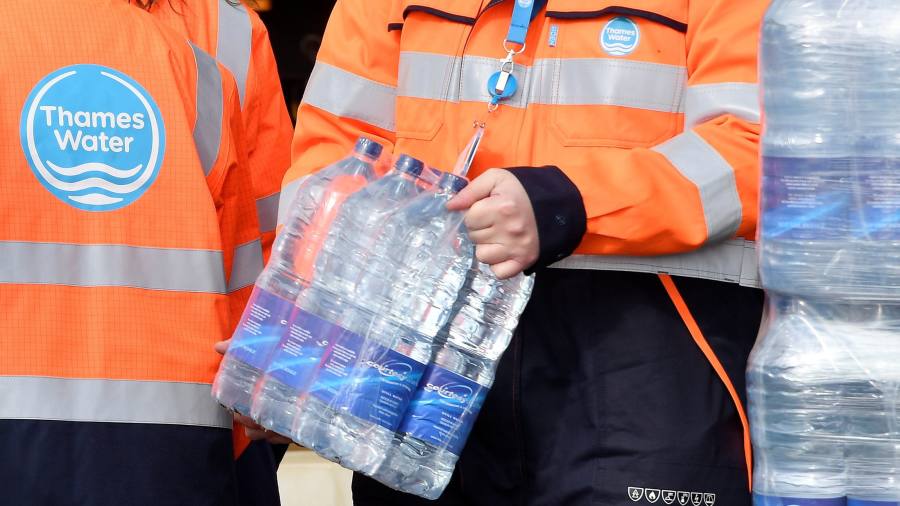Receive free Thames Water PLC updates
We’ll send you a myFT Daily Digest email rounding up the latest Thames Water PLC news every morning.
If water is life then life has been pretty good for those that keep Britain’s taps flowing. None has done better out of Thatcherite liberalisation than private owners of water utilities, including UK pension funds. Thames Water has sprung a cash leak. The snap departure of chief executive Sarah Bentley sparked talk of renationalisation on Wednesday.
Previous owners Macquarie, which helped grow Thames Water’s large debt pile, deserves blame. The combination of a natural monopoly, cheap debt and a weak regulator made water utilities ripe for low-risk, juicy returns. Thames Water, the largest, now teeters on the brink because of rising interest rates and a £14bn debt pile.
Water companies must swim against the tide. Inflation lifts operating expenses and financing costs. Among peers Thames is most exposed to the latter, more so if including extra debts at holding company Kemble Water. Thames ranks joint worst in the country for water treatment, sewage pollution and leaks.
While it spends a greater share of revenues on new investment than peers, higher interest charges will keep this in check. A wholesale restructuring of its bloated balance sheet is needed.
Its net debt to ebitda ratio was 14 times at operating company Thames as of September 2022. For Kemble that figure was 22 times. Operating profits did not equal interest costs, with interest cover at 0.6 times and 0.3 times respectively. A high share of index-linked debt hurts, while indexed water rates lag behind interest payments.
Whether Thames makes outsized returns is difficult to measure. Cash transferred from the operating company to investors via interest payments and dividends over the past decade comes to about £4.1bn, according to S&P data. Peers United Utilities and Severn Trent have paid out similar amounts. The difference at Thames is that three-quarters of that cash flow went as non-taxable interest payments to debtholders.
It is an untenable model. Shareholders already injected an extra £500mn last year. Another £1bn is promised. Getting leverage ratios in line with sector averages would require cutting debt by a quarter, equal to £3.6bn. Much would depend on when inflationary pressures finally ease.
Thames needs a financial plug. But a government that supports privatisation should not again attempt to socialise any cost via taxpayers.
Read the full article here




